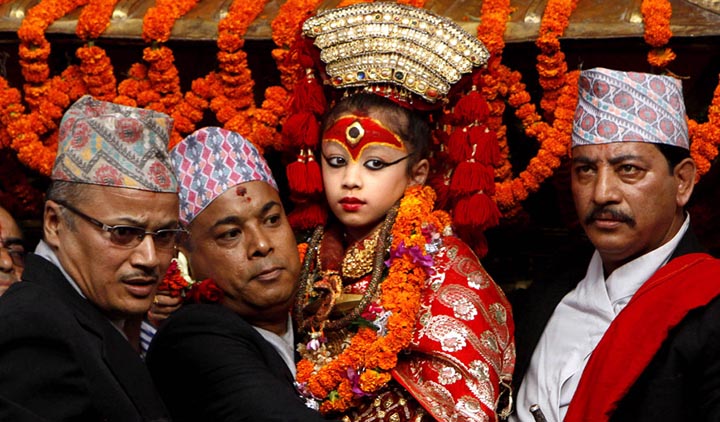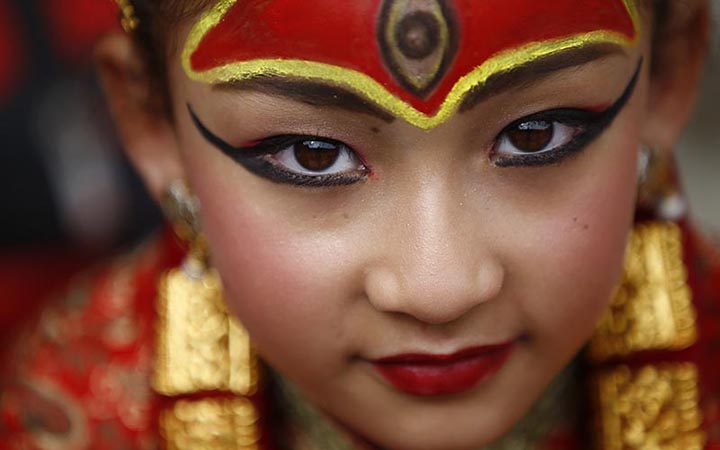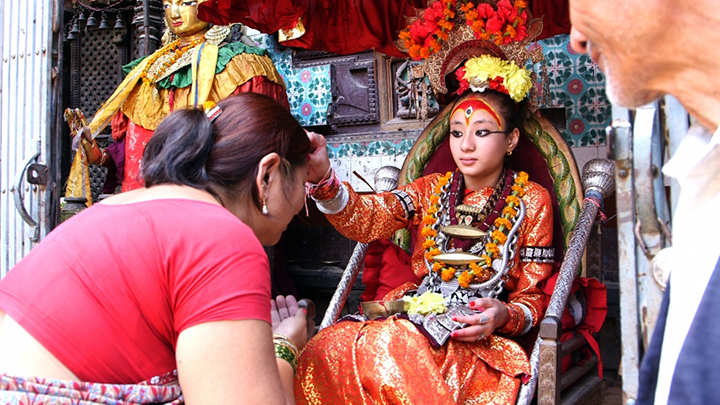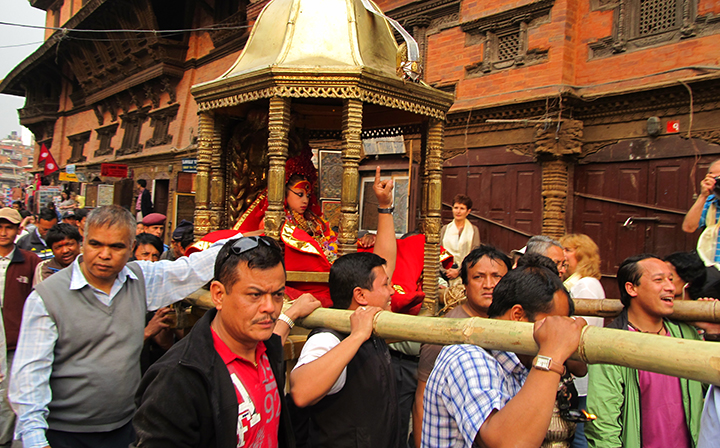
12 July 2019, Kathmandu
Nepal is such a country of unique cultures also known as the land of a living goddess- Kumari. Kumari or Living Goddess is the tradition of worshipping young prepubescent girls as manifestations of the divine female energy or devi in Nepal. The word ‘kumari’ is derived from the Sanskrit word ‘Kaumarya’ meaning ‘princess’. In Nepal, kumari is a prepubescent girl who is selected from the Shakya caste of Newari community. The kumari is also worshiped by some of the Hindu countries. While there are several kumaris throughout Nepal, the best known is the kumari living in the kumari ghar, a palace in the center of the capital city, kathmandu. Kumari is a tradition of power, pageantry and beauty. This unique tradition is a perfect example of the intertwining and peaceful coexistence of nepali religions.

The kumari is believed to be the incarnation of Taleju goddess also believed to be embodied in a long succession of Nepali girls, has been worshiped for centuries. Taleju is traditionally a very important Hindu Goddess and virgin mother of the world. Kumari is also the childhood name of Lord Durga, one of the main Gods of the Hindu religion. Kumari is worth worshiping until she suffers some kind of injury or illness or until her first periods. History records that the tradition of worshiping a virgin girl started during the regime of the last Malla king Jaya Prakash Malla. Hence, he ordered his men the task of building Kumari Bahal (home of Kumari in the Basantpur area) and also started the festival of drawing the chariot of goddess Kumari along with the chariots of Lord Ganesh and Bhairav.

Besides, belonging to the Shakya family, the girls selected to be a Kumari must possess specific characteristics. For this, the physical requirements encompasses black eyes, black hair, and eyelashes like a cow. She also must have twenty unbroken teeth and body like a banyan tree. People have a belief that she relieves people from their troubles, physical, and financial problems and bless her devotes with good fortune. Kumari lives a unique life than other normal girls. She stands as a faith for many and gets royal treatment by the nation. As long as she is Kumari, she is not allowed to have direct contact with the rest of the world. Her education and other basic trainings are managed to be provided with in the Kumari ghar.

However, the transition from being Kumari to come into the normal life again is difficult. Kumari sometimes finds herself difficult to fit into the family and follow the rules and regulations of society. Many people still have the myth believe that Kumari should never get married otherwise the bridegroom will die after the marriage. However, it is only stereotypical belief that confines the life of Kumari to get into the normal life and happily living together. Infact, few of the Kumaris are happily married and spending their life normally. Thus, kumari culture has very significant religious, historic and cultural values to Nepal and Nepalese people representing the cultural identity. Even, this tradition has been granted huge treatment by the international community.










